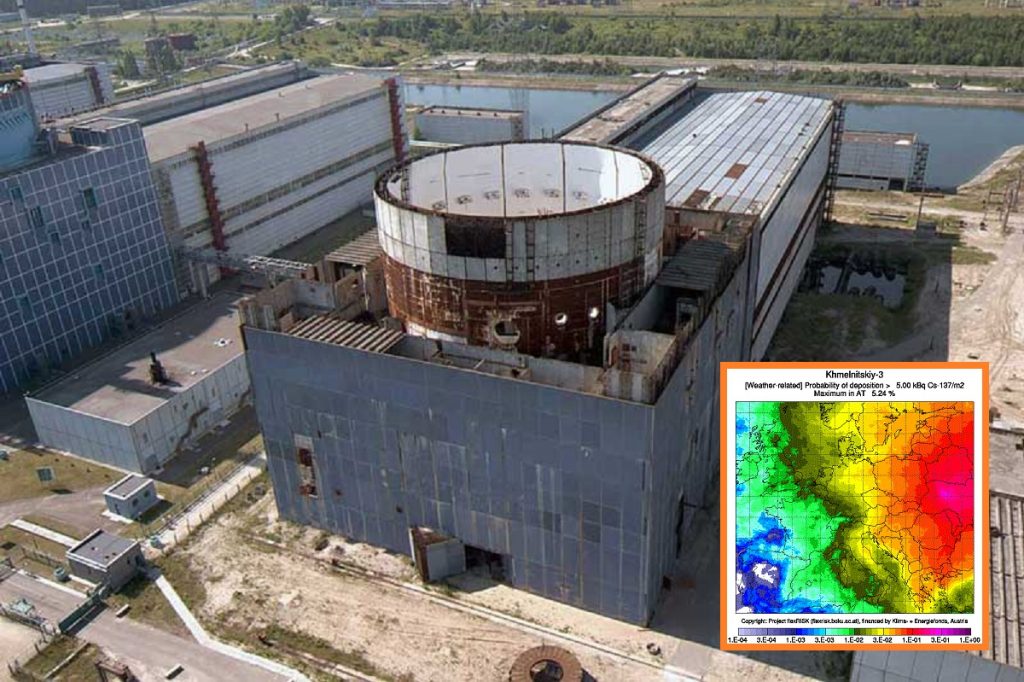The https://english.atlatszo.hu use cookies to track and profile customers such as action tags and pixel tracking on our website to assist our marketing. On our website we use technical, analytical, marketing and preference cookies. These are necessary for our site to work properly and to give us inforamation about how our site is used. See Cookies Policy
Completion of the abandoned nuclear-torso of the ‘80s to get the green light in Ukraine
According to informal sources, Ukraine is about to close the environmental impact assessment procedure of the Khmelnitskiy nuclear power plant today at a ministerial meeting – despite the fact, that four countries, among others Hungary, have been dismissed from the international negotiations. By this, Ukraine clearly breached international regulations, as was indicated by the UN several times. As we reported earlier, Ukraine intends to continue the construction of two unfinished units built in the ’80s and then abandoned after the Chernobyl accident, in Khmelnitsky, only 500 km from the Hungarian border. Since decades, the incomplete structures are standing there unprotected against rain, snow and ice, thus prone to corrosion.

The information we received from non-official sources about the ministerial negotiations today has been affirmed by a facebook post published by the Khmelnitskiy NPP on Tuesday. In the post, the President of the state-owned nuclear operator Energoatom was cited, saying: “We expect that by the end of November the Ministry of Environment will approve the Report on the Environmental Impact Assessment of the Construction of Units № 3,4 of Khmelnitsky NPP.”
According to the international legislation, Ukraine should have informed all affected countries about the potential impacts of the project in a so called environmental impact assessment procedure. During this, authorities of the countries examine, how the project would affect the environment. The construction and operation of a nuclear power plant obviously has transboundary impacts, therefore it is substantial that all potentially affected countries can voice their opinion.
A potential accident could seriously affect Hungary as well
According to scientific distribution models, Hungary can receive a high radioactive dose in case of a major nuclear accident in Khmelnitskiy. The level of the radioactive contamination depends on the weather, primarily wind conditions. For instance, if the accident happened on a day like July 11, 1995, then the North Eastern part of Hungary would receive a high dose of radioactivity. On a day like July 7, 1995, most part of Hungary would be contaminated, but to a lower level. And on July 20, the radioactive cloud would avoid Hungarian territory.
Nuclear reactor units abandoned 30 years ago after Chernobyl to be finished in Ukraine
In the recent weeks, the whole world re-lived one of history’s most severe nuclear catastrophes (Ukraine, 1986), thanks to the Chernobyl miniseries.
Thus, what is being built in Khmelnitskiy, 500 kilometers from the border, is of great relevance for Hungary. Speaking of a potential accident is not a fabrication by alarmists: although the President of Energoatom, in the above mentioned facebook-post, claimed that “the condition of the unfinished power units №3 and №4, despite the need to replace some metal structures, fully meets the design requirements”, earlier expert studies came to different conclusions. These analysis talked about mechanical defects of the structures, corrosion of the reinforcement and metal components of the reinforced concrete structures, as well as cracks in concrete and corrosion.
Besides, the expert analysis of the Environment Agency Austria claimed that appropriate information about the conditions of the existing buildings, structures and equipment was missing from the official documentation of the Environmental Impact Assessment process. Furthermore, the available information shows that the site evaluation is not in compliance with current international requirements, because the quoted international recommendations are outdated, e.g. regarding earthquakes or tornados (the site is located in a tornado hazardous area).
In theory, we should have a say in the decision
In transboundary impact assessment procedures, the country planning the investment (in our case, Ukraine) notifies all potentially affected countries about opening the procedure. The countries decide whether they intend to participate in the process: if they do, the receive a comprehensive documentation package. Based on that, they can ask questions, carry out their own examinations, provide their official position or make legal actions. Besides, public hearings must be organized in which people receive information about the planned investment and can ask questions and voice their opinion.
In case of the Khmelnitskiy project, this did not happen in a way it should have: the procedure in Austria, Belarus and Poland was carried out properly, however, Hungary, Slovakia, Romania and Moldova has been dismissed from the international negotiations. However, all four countries had informed Ukraine of their willingness to participate in the reopened transboundary procedure in 2017.
The relevant UN-body, the UNECE has been examining the case since 2018, and, according to the meeting reports, called Ukraine several times to provide the reason for not extending the consultations to all countries. As Ukraine failed to give an explanation, the responsible committee, in their last meeting in September 2020, called Ukraine to engage with Hungary, Moldova, Romania and Slovakia without delay and to provide all countries equal opportunity to participate in the transboundary environmental impact assessment procedure.
It was emphasized that not involving four affected parties in the transboundary procedure while carrying out a fully-fledged procedure with three other parties constituted non-compliance with the Espoo Convention.
We contacted the responsible Ministry of Agriculture, but unfortunately they did not answer our questions. According to Energiaklub’s information, the Ministry of Agriculture has not been approached by Ukraine in any ways since the September-meeting of the UNECE. However, after our inquiry this week, the Ministry allegedly contacted Ukraine regarding this matter.
Written and translated by Orsolya Fülöp. The Hungarian version of this article is available here.


